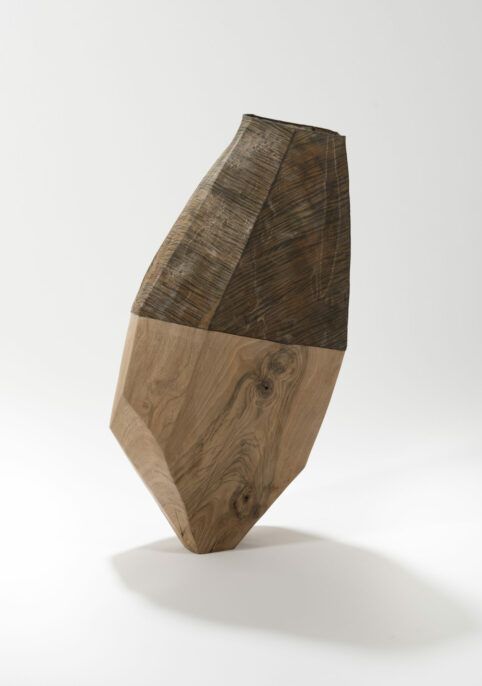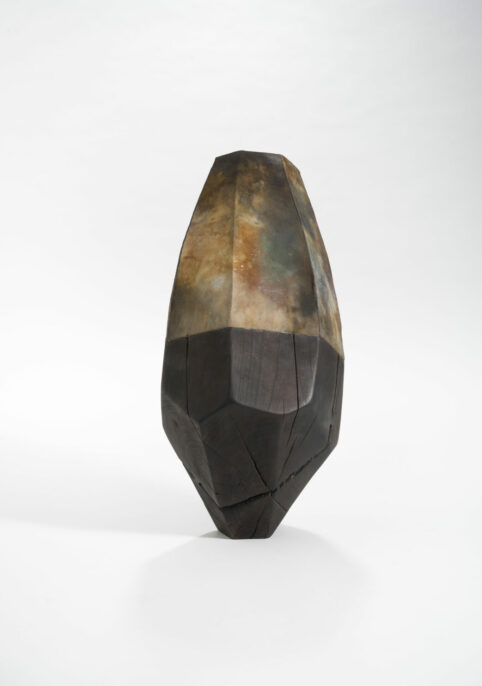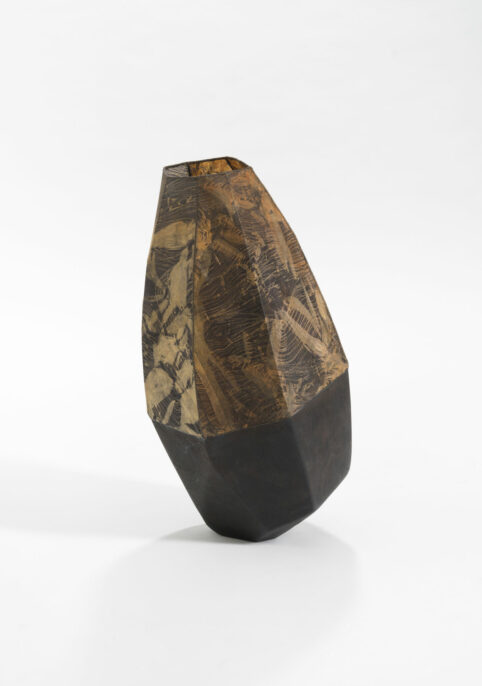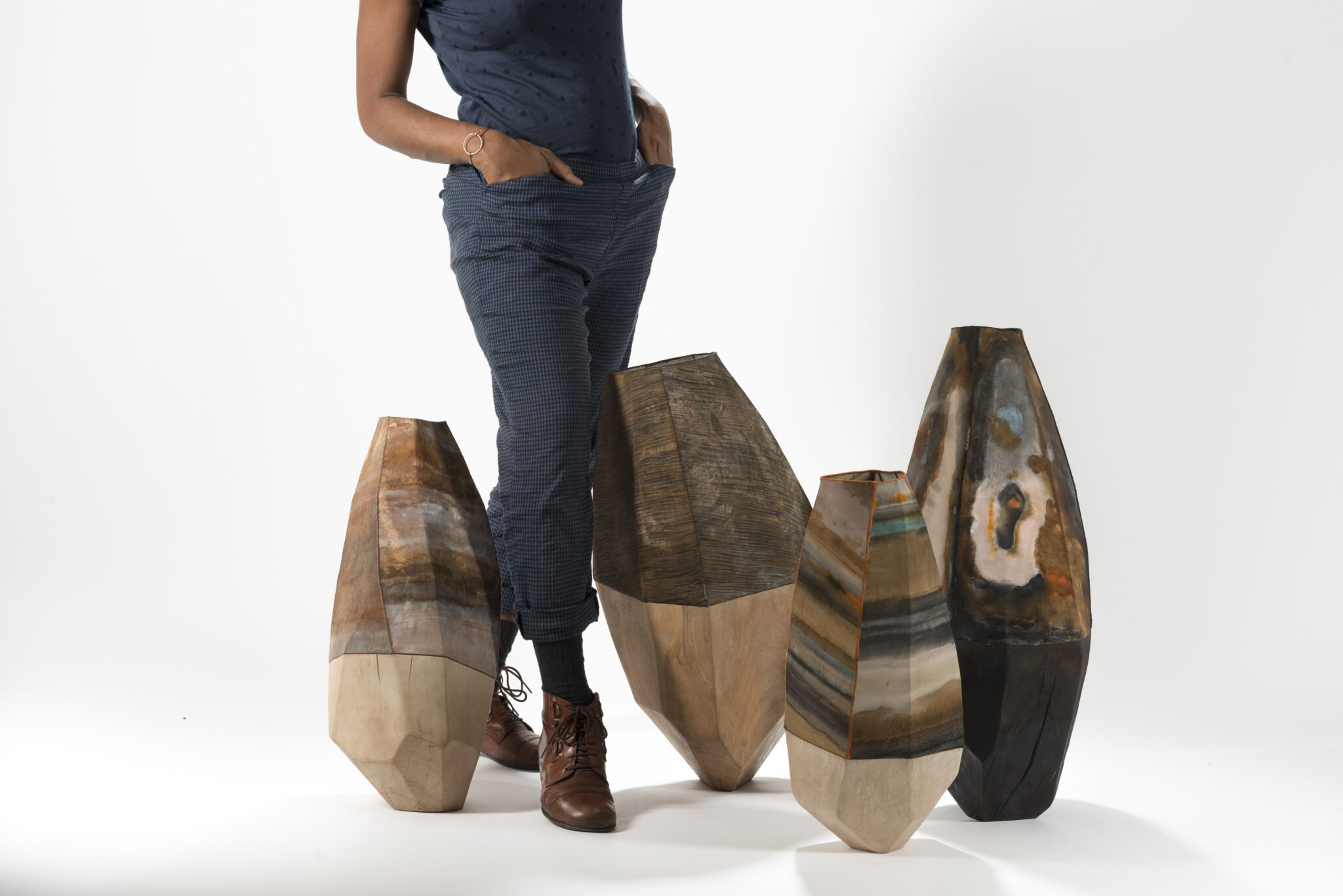
SYLVIA EUSTACHE ROOLS
1. Where were you born and where are you from ?
I was born in the suburbs of Paris but I spent my first three years in Martinique. Today, I feel like I have a triple basis. There is the Caribbean in background, Japan for everything I owe it as a note of heart and my western base as a note of head.
2. What is your first memory connected to the art world ?
Strangely, I think those are the words. Reading through descriptions, the cathartic power of stories, the possibility of being transported elsewhere. As a child, I especially remember a collection of storybooks borrowed from a library. A kind of anthology. Huge volumes of fine paper, tiny letters, compact text blocks and rare black illustrations like Chinese shadows that words were able to color and animate.
3. Have you always worked in the art/design field ?
In part. I worked for several years as a stylist deco for the press. I made art direction, style consulting, striving to have a very artistic approach to these jobs. But I must acknowledge today that in this way, I always fell short of my artistic intentions and intuitions.
A special experience when I gave workshops in «colors and materials» in a fashion school. I had a lot of fun sharing and talking about creativity.
4. What led you to the design creation ?
Part of me is “materialistic”… I mean, I like objects. Or rather the use we make of them, the way they accompany us. I’m thinking of a reflexion of Sheila Hicks that may seem completely disconnected from reality but may in fact have a political significance. She said that a lot of the misfortune in the world came from the proliferation of bad textiles…This idea that the quality of human productions affects the course of our lives. What I like about art objects is the ability to put so much attention on one piece. I’m very sensitive to so-called “loaded” items. Outside of the ritual or religious sphere, thinking that a piece conveys something other than its materiality?…
5. How would you describe your creative process and it influences ?
Let all that I have been given to experience, see and experience infuse into my life and my inner strength. Emotions, sensations, images, gleaned materials. That’s how it all begins… Establish silence so that the evidences outcrop, the correspondences appear. It is a process that has been very much nourished by the Zen philosophy of absorption.
I owe a lot to Japan for my aesthetic training. I had the chance to discover this country more than 10 years ago. I went back several times afterwards. It appeared to me that I had strong ties with this culture. 10 years ago, the notions of wabi sabi, mono no aware had not yet become decorative tendencies in the West and I remember the shock of discovering that there were aesthetic concepts finally putting the words on my hunches.
As for the influences, the Mingei movement and again and again, the popular crafts (from here and elsewhere) that conceal treasures of inventiveness and creativity.
6. Could you describe a typical day of your work ?
Every day can be very different from the day before and the day after. I ask every day to know how to put myself in condition, to proceed justly, not to be overwhelmed by the polymorphic aspect of my practice.
In “passagère du silence” by Fabienne Verdier this sentence: «We enrich his painting by living the mood of the day». Each day has a different color and you have to be able to pick up the ad hoc palette. The multiple steps in my work encourage this type of operation. One day will be conducive to sewing, another to colour work… Welding, working iron, collecting tinctorial plants, observing nature… All of this works fine until I’m caught up in a rush…
7. Why did you choose the specific materials you work with ?
With the AWARÉ project, I returned to my first loves. I studied textile art and printing. I have a real love for fabrics, patterns, textures, contextures. All the historical, cultural, sociological aspect related to this medium. During my studies, I worked on erosion, memory and time. Textiles are a material that keeps traces, memories. You can read the transformations. I was fascinated by what I was going to call later the Textile Geology. This ability to testify.

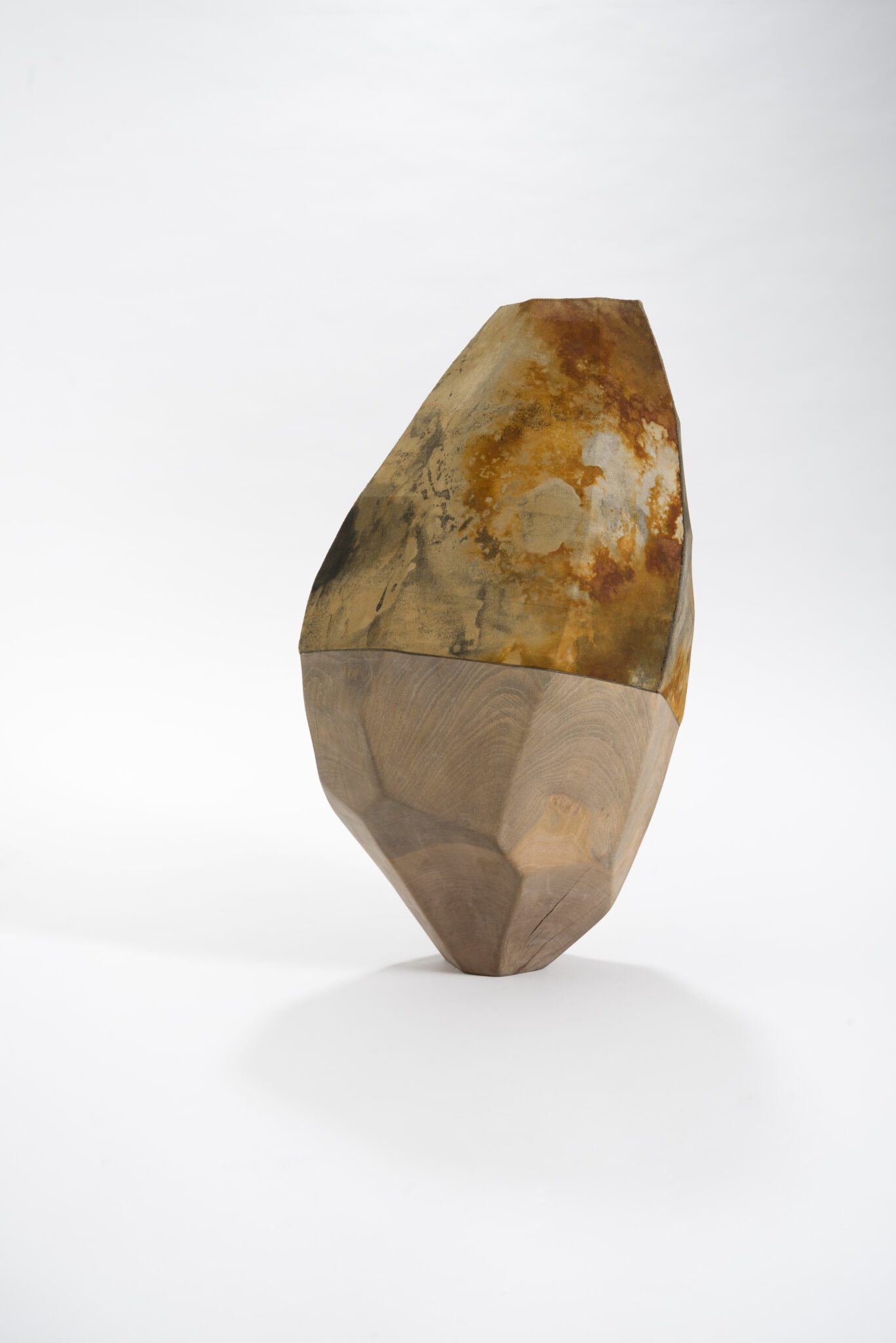
8. What are the technical particularities of your creations ?
I work the textile on an empirical basis. I’m not an expert on any particular technique. I’m interested in the processes that transform the textile. Oxidation, painting, dyeing, maceration… The samples that I like the most result from multiple and various interventions on the same tissue.
When the technique works with the experimental, we oscillate between the known and the unknown which is for me a good balance.
Another technique specificity of my creations is sewing. This meticulous and time-consuming part reveals a symbolic importance. Zen monks used to make a garment, kesa from pieces of fabric sewn together. A way to understand the fact that time is not a solid line but a succession of present moments. Sewing was part of a meditative practice and this is how I perceive this stage of work. This is also a way of reminding me that things are not hanging by only one thread but several.
9. What advices could you give to beginning artists who would like to create sculptural design works ?
To build oneself a deep and dense inner world… And I would add James Baldwin’s sentence : “Talent is insignificant. I know a lot of talented disasters. Beyond talent, there are the usual words : discipline, love, luck, but above all endurance.”
10. If your works had to belong to a design movement, in which one would you define it ?
I prefer to leave the answer to others… if they find it.
11. What designers have influenced you ?
I’m more inspired by popular art. Nameless. Everyday objects.
I was very moved by Serge Mouangue’s reflection and approach on his WAFRICA project. His TED conference on this subject fed me a lot.
12. What contemporary designers do you appreciate ?
Justyna Poplawska, Talia Mukmel, Elisa Strozyk.
Old school : George Nakashima, J. B. Blunt.
13. What contemporary artists (in any kind of art) have you been inspired by ?
Kazunori Hamana. For his work of course but also by his retired way of life, close to nature, developing his art (very impressives ceramics) and being fisherman in the same time. His creations are full, whole, obvious. I have meet him few years ago and I was very impressed by the balance feeling I felt at this moment. It has a lot influenced my actual life choice.
The photograph Tom Hegen for his beautiful abstract view of the earth. A valuable source of inspiration.
14. If you had to summarize your creations in one word or sentence, what would it be ?
Intuitive.
15. Is there anything you would like to add ?
–
Proust Questionnaire with very short answers (one or a few words) :
(The Proust Questionnaire is a set of questions answered by the French writer Marcel Proust. Other historical figures who have answered confession albums are Oscar Wilde, Karl Marx, Arthur Conan Doyle, Stéphane Mallarmé, Paul Cézanne…)
1. What is your idea of perfect happiness?
The balance of opposites.
2. What is your greatest fear?
Fear.
3. What is the trait you most deplore in yourself?
A little bit misanthropist…
4. What is the trait you most deplore in others?
The lack of empathy.
5. Which living person do you most admire?
My soul sister.
6. What is your greatest extravagance?
My taste for solitude.
7. What is your current state of mind?
Thoughtful.
8. What do you consider the most overrated virtue?
Perfection.
9. What is the quality you most like in a man?
Loyalty.
10. What is the quality you most like in a woman?
Loyalty.
11. Which words or phrases do you most overuse?
« Il n’en sera pas toujours ainsi. ».
12. Which talent would you most like to have?
All !!!
13. If you could change one thing about yourself, what would it be?
The unnecessary.
14. What do you consider your greatest achievement?
To have been able to find the point of insertion of art in my life.
15. If you were to die and come back as a person or a thing, what would it be?
A cherry blossom tree…
16. Where would you most like to live?
A mix of Martinique and Japan.
17. What is your most treasured possession?
I’m not sure I own anything here below.
18. What do you regard as the lowest depth of misery?
Resignation.
19. What is your favorite occupation?
Read and make « wild ikebana ».
20. What is your most marked characteristic?
To be still alive.
21. What do you most value in your friends?
The warmth they give.
22. Who are your favorite writers?
Patrick Chamoiseau , Toni Morisson, Bashô, Ryoko Sekiguchi, James Baldwin, Léonora Miano, Ray Bradbury… et tant d’autres.
23. Who is your hero of fiction?
–
24. Which historical figure do you most identify with?
–
25. Who are your heroes in real life?
Ordinary people.
26. What are your favorite names words?
Starkness
27. What is it that you most dislike?
Inequality.
28. What is your greatest regret?
Not speaking multiple languages.
29. How would you like to die?
As I have lived. At ease.
30. What is your motto?
« Va laver ton bol. » En référence à un conte zen : Un bonze nouvellement arrivé dans un monastère, demande à son maître : « Pouvez-vous me donner un enseignement ? As-tu mangé ta soupe de riz ? Demande le maître. C’est fait, réplique le jeune bonze. -Alors, va laver ton bol ». Au même instant, le bonze connu l’éveil.
